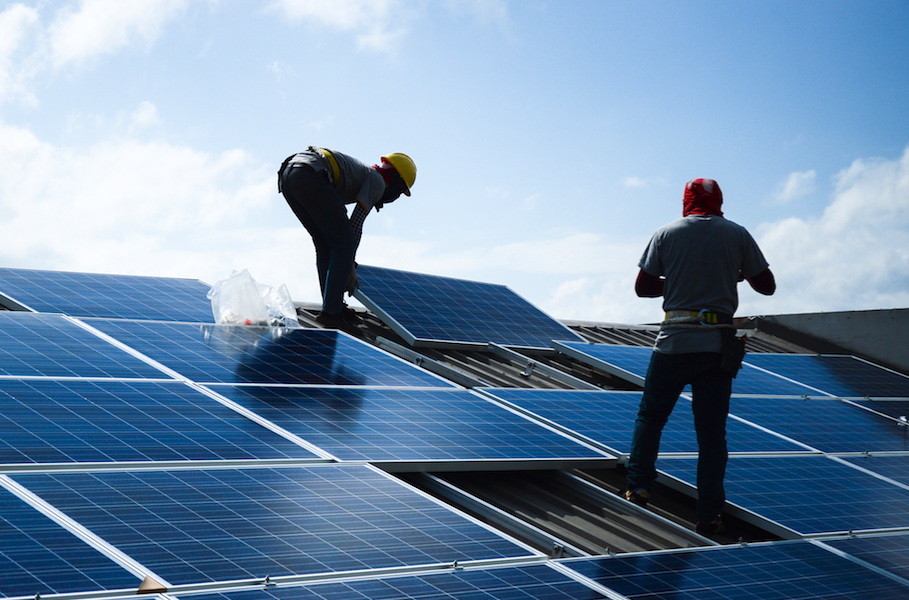
CRABS GONE WILD?
According to an annual advisory report published by the Chesapeake Bay Program, Maryland blue crab populations have increased 60 percent over the last year. Despite last year’s heavy spring rains, which can impact water salinity, visibility, and oxygen levels, as well as a slow start to this year’s spring harvesting season, adult females were up 29 percent, adult males up were 38 percent, and juveniles were up 50 percent, though many watermen throughout the state have complained of poor catches. The resurgence could reduce prices throughout the summer. New research from the University of Maryland Center for Environmental Science also suggests that blue crab season, which are notoriously fickle year over year, might become longer and more plentiful in future decades due to the milder winters of global warming, though warmer waters could also lead to other new environmental issues for the estuary ecosystem.
GRASS IS GREENER
Despite last year’s record rainfall, the Chesapeake Bay’s underwater grasses proved resilient with nominal losses in 2018. More than 91,000 acres of underwater grasses were recorded baywide, compared to 2017’s 105,000 acres, with an estimate 50,000 acres in Maryland and some waterways still surpassing their restoration goals for aquatic vegetation. These grasses require clear water to survive and provide important habitat for wildlife such as blue crabs, fish, and waterfowl. Last year’s heavy rains carried a deluge of sediment and nutrients from fertilizer, sewage, and pollution into the bay, which impact clarity and oxygen levels. As a result, this summer’s “dead zone,” aka the annual summer area within the bay with little or no oxygen, is also forecast to be one of the largest on record this summer.
SHELL YEAH
Since launching in 2014, the Greater Baltimore Oyster Partnership, a collaboration between the Waterfront Partnership’s Healthy Harbor Initiative, the Chesapeake Bay Foundation, and numerous downtown businesses, have announced that they have grown their millionth oyster in the Inner Harbor. With the help of corporate volunteer oyster gardens and restoration projects along the Patapsco River, the initiative aims to increase the health of local waterways, as an adult oyster can filter up to 50 gallons of water each day. And just yesterday, five million spat, or baby oysters, were planted in the Patapsco River, officially meeting the partnership’s goal of doing so by 2020.
WATER WORLD
The Middle Branch of the Patapsco River will soon be getting a facelift with ambitious new plans recently winning approval in a design competition for the multi-year renovation of the South Baltimore waterfront. If finalized, it would include an overhaul of the century-old Hanover Street Bridge into a no-traffic green space, as well as an 11-mile waterfront park that runs along Cherry Hill, Brooklyn, Westport, Riverside, and Port Covington with park trails, boardwalks, boat launches, an amphitheater, and other recreational spaces, while also constructing a new road to the nearby neighborhoods. The plans, submitted by Dutch architecture firm West 8, have been given the green light by Mayor Jack Young and are currently under review by city agencies.
SCI-FI NATURE
Earlier this summer, a carnivorous plant called dwarf sundew was discovered in Maryland for the very first time. One of nearly 20 types of carnivorous plants in the state, the small plant has pink petals and paddle-shaped leaves that form a rosette at the base and are covered in green and red hairs that exude a stick liquid that attracts and then traps insects. It was found on the lower Eastern Shore in Worcester County.
RENEWABLE RULES
Earlier this month, the Maryland Court of Appeals unanimously ruled that the state’s public service commission could trump the power of local government to approve future power plant projects, particularly relating to solar and wind energy. Citing state law that mandates reduced greenhouse gas emissions, the ruling in accordance with state law. Advocates have said that local jurisdictions have hindered development, while critics have cited residents’ concerns over eyesores and agricultural disruptions in rural communities. Legislature passed earlier this year also requires that Maryland get half of its energy from renewable sources by 2030. At last count in 2017, water and solar accounted for 10 percent of Maryland’s total net electricity generation.
